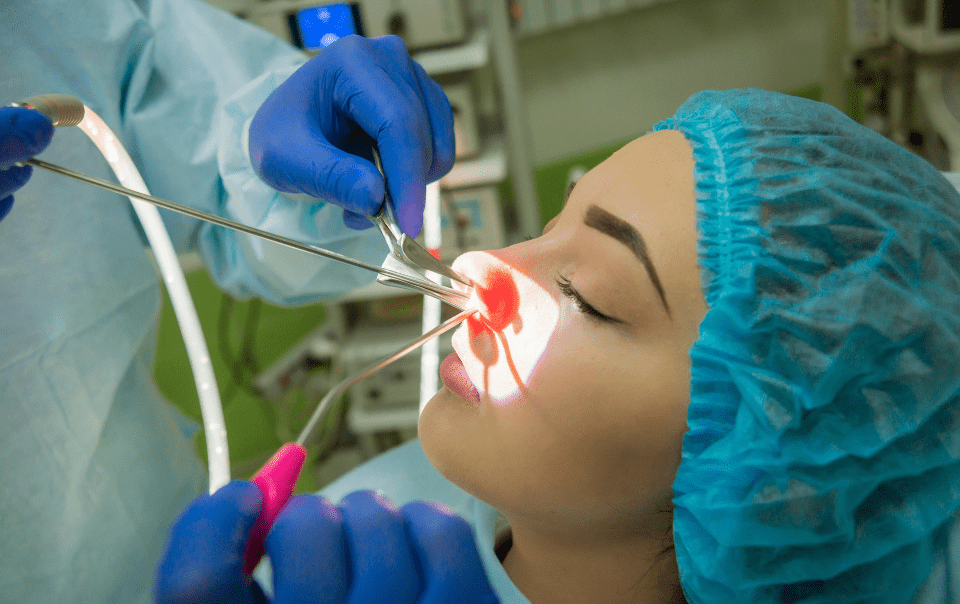Breathing is one of the most basic and essential functions of life, yet many people struggle with it due to nasal blockages or other issues. Whether it’s due to chronic sinusitis, a deviated septum, nasal polyps, or other nasal obstructions, difficulty breathing can significantly impact your quality of life. Thankfully, advancements in medical technology have made it possible for a sinus doctor in Los Angeles to address these issues with minimally invasive nasal procedures. These procedures can dramatically improve your breathing, offering relief with less pain, quicker recovery, and fewer risks compared to traditional surgeries.
Understanding Nasal Breathing Problems
Before diving into the details of minimally invasive nasal procedures, it’s important to understand the common causes of nasal breathing problems. The nasal passages are a complex system that can be affected by various conditions:
1. Chronic Sinusitis
Chronic sinusitis is a long-term inflammation of the sinuses that can cause persistent nasal congestion, facial pain, and pressure. When the sinuses become blocked due to inflammation or infection, it can make breathing through the nose difficult and uncomfortable.
2. Deviated Septum
The nasal septum is the wall that divides your nasal cavity into two nostrils. A deviated septum occurs when this wall is off-center, making one nasal passage smaller than the other. This can lead to breathing difficulties, especially on one side of the nose.
3. Nasal Polyps
Nasal polyps are soft, painless, noncancerous growths on the lining of your nasal passages or sinuses. They can block nasal passages, making it difficult to breathe and often causing a loss of smell.
4. Allergies
Allergies can cause the nasal passages to become inflamed and swollen, leading to congestion and breathing difficulties. Chronic allergic rhinitis is a common cause of long-term nasal congestion.
5. Turbinate Hypertrophy
Turbinates are structures inside the nose that help warm and moisten the air you breathe. Turbinate hypertrophy occurs when these structures become enlarged, often due to allergies or infections, causing nasal obstruction.
The Role of Minimally Invasive Nasal Procedures
Traditional nasal surgeries, such as septoplasty or sinus surgery, are effective but can be invasive, requiring longer recovery times and carrying a higher risk of complications. Minimally invasive nasal procedures, on the other hand, are a more patient-friendly alternative. These procedures involve smaller incisions and less tissue removal and often use advanced technologies like endoscopes, lasers, and specialized surgical instruments. Here are some of the key minimally invasive nasal procedures sinus doctors in Los Angeles can use to improve your breathing:
1. Balloon Sinuplasty
Overview
Balloon sinuplasty is a minimally invasive procedure designed to treat chronic sinusitis. Unlike traditional sinus surgery, which involves cutting and removing bone or tissue, balloon sinuplasty uses a small, flexible balloon catheter to open up blocked sinus passages.
How It Works
During the procedure, a small balloon is inserted into the sinus passage using a catheter. The balloon is then gently inflated, which widens the sinus opening by restructuring the surrounding bone. Once the sinus is opened, the balloon is deflated and removed, leaving the sinus passage open and allowing for better drainage.
Benefits
- Less invasive: No cutting or removal of tissue, which means less pain and quicker recovery.
- Effective relief: Many patients experience significant improvement in their symptoms and overall quality of life.
- Quick procedure: The procedure is often done in-office and takes about an hour.
Also Read: Balloon Sinuplasty vs. Minimally Invasive Image Guided Sinus Surgery
2. Septoplasty
Overview
Septoplasty is a surgical procedure to correct a deviated septum, which is a common cause of nasal obstruction. In cases where the deviation is severe, minimally invasive techniques can be used to straighten the septum.
How It Works
During a minimally invasive septoplasty, the surgeon makes small incisions inside the nostrils to access the septum. Using specialized instruments, they reshape or remove the deviated parts of the septum to create a straight, open nasal passage. The procedure is often performed with the aid of an endoscope, which provides a clear view of the nasal structures without the need for large incisions.
Benefits
- Improved breathing: Straightening the septum allows air to flow more freely through the nasal passages.
- Minimized tissue trauma: The use of endoscopic techniques reduces the amount of tissue that needs to be cut, leading to faster recovery and less pain.
- Shorter recovery time: Most patients can return to normal activities within a week.
Also Read: Selecting the Right Surgeon for Septoplasty: Key Considerations
3. Turbinate Reduction
Overview
When the turbinates (small structures inside the nose that cleanse and humidify the air you breathe) become enlarged, they can block airflow and cause breathing difficulties. Turbinate reduction is a procedure to reduce the size of the turbinates and improve airflow.
How It Works
Minimally invasive turbinate reduction can be performed using radiofrequency energy, lasers, or microdebriders. These tools allow the surgeon to shrink or remove a portion of the enlarged turbinates without the need for large incisions. The procedure is often done under local anesthesia and can be completed in less than an hour.
Benefits
- Preserves nasal function: The procedure reduces the size of the turbinates while preserving their important functions.
- Quick recovery: Most patients experience minimal discomfort and can return to normal activities within a few days.
- Effective results: Many patients report significant improvements in their breathing and reduction in nasal congestion.
4. Endoscopic Sinus Surgery
Overview
Endoscopic sinus surgery is a minimally invasive technique used by sinus doctors in Los Angeles to treat chronic sinusitis, nasal polyps, and other conditions that block the nasal passages. This surgery involves the use of an endoscope, a thin tube with a camera and light, to see inside the nasal passages and sinuses.
How It Works
The surgeon inserts the endoscope through the nostrils, allowing them to see inside the sinuses without making external incisions. Using specialized instruments, the surgeon can remove blockages, polyps, or infected tissue to restore normal sinus drainage and improve airflow.
Benefits
- Less invasive: No external incisions are needed, reducing the risk of scarring and complications.
- Improved breathing and sinus function: By removing blockages and improving sinus drainage, this procedure can significantly enhance nasal breathing.
- Reduced recovery time: Patients typically experience a faster recovery compared to traditional sinus surgery.
Also Read: What to Expect After Endoscopic Sinus Surgery
The Advantages of Minimally Invasive Procedures

1. Reduced Pain and Discomfort
Minimally invasive procedures involve smaller incisions and less tissue trauma, which means less pain and discomfort during recovery. Patients often report less post-operative pain and a quicker return to normal activities.
2. Quicker Recovery Time
Because these procedures are less invasive, the body doesn’t need as much time to heal. This means you can get back to your daily routine faster. In many cases, patients can return to work or their normal activities within a few days after the procedure.
3. Lower Risk of Complications
Minimally invasive procedures carry a lower risk of complications, such as infection, bleeding, or scarring. The precision of these techniques also reduces the chance of damaging surrounding tissues.
4. Outpatient Procedures
Many minimally invasive nasal procedures can be performed by a sinus doctor in Los Angeles on an outpatient basis, meaning you can go home the same day. This convenience reduces the overall cost and time commitment associated with surgery.
5. High Success Rates
Minimally invasive nasal procedures have high success rates, with many patients experiencing significant improvements in their breathing and quality of life. These procedures are particularly effective for individuals who haven’t found relief through medication or other non-surgical treatments.
Who is a Candidate for Minimally Invasive Nasal Procedures?
Not everyone with nasal breathing problems will require surgery, but for those who do, minimally invasive procedures can be an excellent option. You may be a candidate if:
- You have chronic sinusitis that doesn’t respond to medication. If you’ve tried various treatments without success, minimally invasive sinus surgery like balloon sinuplasty, may provide relief.
- You have a deviated septum, causing significant breathing problems. If your septum is severely deviated, a minimally invasive septoplasty could help open up your nasal passages.
- You have nasal polyps or other obstructions. If nasal polyps are blocking your airways, endoscopic sinus surgery might be the solution.
- You suffer from turbinate hypertrophy. If enlarged turbinates are causing chronic congestion, turbinate reduction could improve your breathing.
It’s important to consult with a sinus doctor in Los Angeles who can evaluate your condition and determine the best treatment plan for you.
Conclusion
Minimally invasive nasal procedures offer a promising solution for those struggling with nasal breathing problems. These advanced techniques provide effective relief with fewer risks, less pain, and quicker recovery times compared to traditional surgeries. If you’re dealing with chronic sinusitis, a deviated septum, nasal polyps, or other nasal obstructions, these procedures might be the key to breathing easier and improving your quality of life. Consult with a sinus doctor in Los Angeles to explore your options and find out if a minimally invasive nasal procedure is right for you. Contact the Southern California Sinus Institute today!

